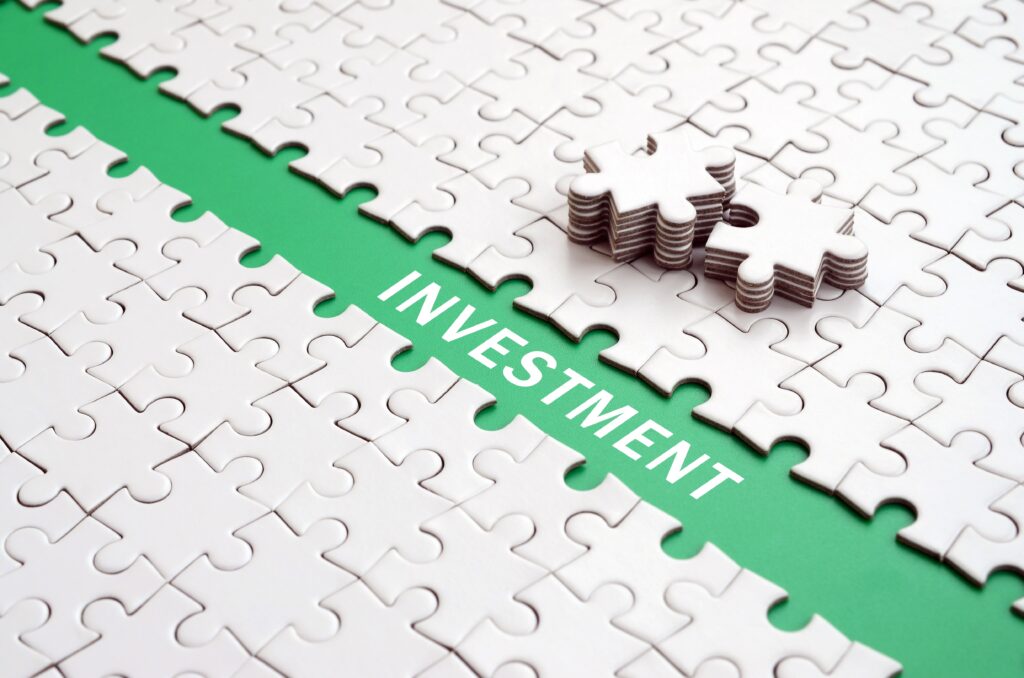
Introduction
The Forex market is known for its sensitivity to various economic and geopolitical events, from political elections to economic data releases. However, there is a less explored but fascinating aspect of Forex market reactions – how major global archaeological discoveries influence currency exchange rates. Archaeological findings have the potential to significantly impact tourism, cultural investments, and national sentiment, which in turn can affect a country’s currency strength. In this comprehensive study, we will delve into the relationship between archaeological discoveries and Forex market reactions, with a special focus on countries boasting significant historical sites.
The Connection Between Archaeological Discoveries and Forex Market Reactions
The connection between archaeological discoveries and Forex market reactions is a multifaceted and intriguing phenomenon that warrants a more detailed exploration. The Forex market, often referred to as the foreign exchange market, is indeed a complex system influenced by a multitude of factors, and among these, sentiment plays a pivotal and often underestimated role.
Sentiment, in the context of the Forex market, refers to the collective emotional and psychological state of traders and investors. It reflects their overall perception of the market’s current and future conditions, including their confidence or uncertainty in various currency pairs. Sentiment can be influenced by a wide range of events, such as economic data releases, geopolitical developments, and even unexpected events like natural disasters. However, one less-obvious but fascinating event that can significantly sway market sentiment is the announcement or realization of a major archaeological discovery.
These archaeological discoveries have the potential to reshape not only a country’s historical narrative but also its economic landscape. Let’s delve deeper into how this process unfolds:
- Reshaping National Identity: Archaeological discoveries often unearth artifacts, structures, and evidence of ancient civilizations, shedding new light on a nation’s history and cultural heritage. These revelations can instill a sense of pride and identity among the population. Citizens of the country may feel a stronger connection to their heritage and history, leading to increased national confidence.
- Tourism Boom: One of the most immediate and visible impacts of major archaeological discoveries is their ability to attract tourists. Tourists flock to these newfound historical sites, eager to witness history firsthand. This surge in tourism can lead to increased revenue for the country. The influx of tourists stimulates various sectors of the economy, including hospitality, transportation, and dining, thereby creating jobs and boosting economic activity. This economic growth can have a direct and positive impact on a country’s currency exchange rates.
- Cultural Investments: Governments and private investors often recognize the economic potential of newfound historical treasures. As a result, they allocate funds for the preservation, restoration, and exhibition of these artifacts and sites. These investments not only safeguard the cultural heritage but also stimulate economic growth. Cultural investments create employment opportunities and generate economic activity, which can contribute to a more robust economic outlook for the country, potentially strengthening its currency.
- Positive Public Sentiment: As citizens witness their country’s historical treasures on display and read about these discoveries in the news, they may become more optimistic about their nation’s future. Positive sentiment among the general population can lead to increased consumer spending and investments, which, in turn, can have a significant impact on a country’s economic performance and its currency’s strength.
In essence, the unveiling of archaeological treasures acts as a catalyst for economic change within a nation. This change, driven by increased tourism, cultural investments, and a boost in national pride, can influence a country’s economic outlook and, consequently, its currency exchange rates. Forex market participants closely monitor these developments, and their reactions can be categorized as follows:
- Increased Buying Interest: Positive news regarding major archaeological discoveries can lead to an influx of buying interest in the respective currency. Traders and investors may perceive a stronger economic outlook for the country and seek to capitalize on potential currency appreciation.
- Economic Indicator Impact: Archaeological discoveries have tangible economic effects through tourism and cultural investments, which, in turn, influence key economic indicators. GDP growth, employment rates, and even inflation can be affected, providing market participants with valuable data for their trading decisions.
- Central Bank Policies: In response to economic changes caused by archaeological discoveries, central banks may adjust their monetary policies. These policy adjustments can have a direct impact on currency exchange rates, as they influence interest rates and the money supply.
In conclusion, the relationship between archaeological discoveries and Forex market reactions is a testament to the interconnectedness of history, culture, and economics in the modern world. These discoveries not only unveil the past but also shape the future by impacting a country’s economic landscape and, consequently, its currency exchange rates. Understanding and monitoring this relationship can provide valuable insights for Forex traders and investors seeking to navigate the dynamic and ever-evolving global financial markets.
Read our latest article on Clean Water Initiatives
Archaeological Discoveries as Catalysts for Tourism
Tourism is undeniably one of the most vital economic sectors for numerous nations across the globe. It not only brings cultural exchange and exposure but also serves as a significant driver of economic growth. Remarkably, when a significant archaeological discovery occurs, it has the potential to captivate the imagination of travelers and history enthusiasts from every corner of the world, igniting a surge in tourism that can have far-reaching economic implications.

- The Archaeological Magnetism: Archaeological discoveries have an innate ability to captivate the human imagination. The unearthing of ancient artifacts, historical sites, and traces of civilizations long past evoke a sense of wonder and curiosity that transcends borders and cultures. This magnetic pull attracts tourists who are eager to explore and experience the history, culture, and stories that these discoveries unveil.
- Economic Windfall: The influx of tourists that follows a major archaeological discovery is a boon to the host country’s economy. Travelers spend on a wide range of tourism-related activities, creating a ripple effect of economic activity. Here’s how this process unfolds:
- Accommodation: Tourists need places to stay, leading to increased demand for hotels, lodges, and rental properties. Hotel bookings surge, leading to higher occupancy rates and increased revenue for the hospitality industry.
- Dining and Entertainment: Tourists dine in local restaurants, cafes, and eateries, providing a boost to the food and beverage sector. Additionally, they seek entertainment options, such as cultural performances and guided tours, contributing to the local economy.
- Transportation: Travelers need transportation to reach archaeological sites and explore the region. This leads to increased demand for air, rail, road, and even maritime transportation services.
- Cultural Artifacts: The sale of cultural artifacts, replicas, and souvenirs related to the archaeological discovery becomes a thriving industry. Local artisans and vendors benefit from increased sales, further stimulating economic growth.
- Currency Impact: The surge in tourism activity translates directly into increased foreign exchange earnings for the host country. This influx of foreign currency strengthens the country’s balance of payments and contributes to the stability and strength of its currency in the foreign exchange market.
- Increased Demand for Local Currency: With tourists needing the local currency for various transactions, such as dining, shopping, and transportation, there is a heightened demand for the host country’s currency. This increased demand can lead to an appreciation of the currency’s value against other currencies.
- Positive Economic Indicators: A thriving tourism sector contributes positively to a country’s economic indicators. It can boost the Gross Domestic Product (GDP), create jobs, reduce unemployment rates, and lead to higher tax revenues for the government.
- Sustainable Tourism Development: Archaeological discoveries also encourage sustainable tourism development. Governments and local authorities recognize the importance of preserving these historical sites for future generations. As a result, they invest in infrastructure, conservation efforts, and visitor facilities, ensuring that the benefits of tourism are sustainable over the long term.
- Cultural Exchange and Understanding: Beyond economic benefits, tourism resulting from archaeological discoveries fosters cultural exchange and understanding. It enables people from different backgrounds to connect with each other and appreciate the richness of world history and heritage.
In conclusion, archaeological discoveries possess a unique ability to act as catalysts for tourism, sparking a chain reaction of economic prosperity within the host country. The influx of tourists fuels economic growth through increased spending on accommodation, dining, transportation, and the sale of cultural artifacts. Moreover, the demand for the host country’s currency from tourists contributes to currency strength and stability. This symbiotic relationship between archaeology, tourism, and economic development underscores the far-reaching impact of historical discoveries on the contemporary world. It also emphasizes the importance of preserving and showcasing cultural heritage to promote both economic and cultural enrichment.
Cultural Investments and Archaeological Discoveries
Major archaeological discoveries can lead to increased cultural investments, both domestic and international. Governments and private investors often allocate funds to support the preservation, restoration, and exhibition of newfound historical treasures. These investments can stimulate economic growth and employment opportunities, which can positively influence a country’s economic outlook and strengthen its currency.

The unveiling of archaeological treasures extends far beyond their intrinsic historical value. It often catalyzes a profound sense of pride and identity within a nation. As historical artifacts and sites come to light, they serve as poignant reminders of a country’s rich heritage and cultural legacy. This newfound national pride can have a ripple effect, influencing various aspects of a nation’s society and economy, including its foreign exchange rates in the Forex market.
- Cultural Legacy and Identity: Archaeological discoveries connect modern citizens to their ancestors, providing tangible links to the past. These findings reaffirm a nation’s unique cultural identity and the contributions of its forebears to the global heritage tapestry.
- Symbolism and Identity: Historical artifacts and sites often become symbols of national identity. They are emblematic of a nation’s resilience, creativity, and achievements throughout its history.
- Educational Value: Archaeological discoveries are integrated into educational curricula, allowing citizens, especially the younger generation, to learn about their country’s history and cultural significance. This fosters a deeper connection to their cultural roots.
- Boosting Domestic Morale: The pride stemming from newfound archaeological treasures can positively impact the domestic morale of a nation.
- Increased Confidence: As citizens take pride in their cultural heritage, they tend to exhibit increased confidence in their nation’s capabilities and future prospects. This heightened confidence extends to various aspects of life, including the economy.
- National Unity: Historical discoveries often serve as unifying factors, bringing citizens together in celebration of their shared heritage. This sense of unity can promote social cohesion and cooperation, fostering a conducive environment for economic growth.
- Consumer Spending and Investments: The enhanced national pride and confidence in the economy can translate into tangible economic actions.
- Consumer Spending: Confident citizens are more likely to engage in discretionary spending, stimulating domestic consumption. Increased spending can drive economic growth and positively impact various sectors, including retail and services.
- Investment Incentives: Heightened national pride can attract domestic and foreign investments. Investors are more inclined to allocate funds to countries that exude stability, patriotism, and optimism.
- Forex Market Impact: The sentiments and actions of citizens, businesses, and investors, driven by the sense of national pride and economic confidence, can have a direct influence on a country’s Forex rates.
- Currency Demand: Increased economic activities, consumer spending, and investments often lead to higher demand for the domestic currency. This heightened demand can result in an appreciation of the currency’s value in the Forex market.
- Investor Attraction: Foreign investors, observing a nation’s economic vigor and positive sentiment, may seek opportunities within its borders. Their capital inflows can further strengthen the domestic currency.
- Market Sentiment: Forex market participants closely monitor the overall sentiment within a nation. Positive sentiment, fueled by national pride and economic optimism, can encourage traders and investors to favor the country’s currency.
In summary, archaeological discoveries have a profound impact beyond the realm of history and culture; they extend their influence into the economic and financial domains. The unveiling of historical treasures can cultivate a sense of national pride, unity, and confidence that reverberates throughout a nation. This newfound pride can spur domestic morale, encouraging increased consumer spending, investments, and economic growth. Consequently, these factors can play a pivotal role in influencing Forex rates, as Forex market participants react to the evolving economic landscape shaped by a nation’s historical significance and national pride.
Case Studies: Archaeological Discoveries and Forex Market Reactions
To provide concrete examples of the fascinating relationship between archaeological discoveries and Forex market reactions, let’s delve into three compelling case studies from different parts of the world. These cases underscore how historical findings can reshape a country’s economic landscape, impacting currency exchange rates and investor sentiment.
a. Egypt and the Unearthing of Pharaoh’s Tombs
When archaeologists unearthed the remarkably well-preserved tombs of ancient Egyptian pharaohs, Egypt witnessed a remarkable transformation in its economic fortunes. This archaeological discovery, laden with historical significance, had a profound effect on the Forex market and the country’s currency, the Egyptian Pound (EGP).
Tourism Boom: Egypt has long been a popular tourist destination due to its rich history, but the discovery of these pristine pharaohs’ tombs further intensified international interest. History enthusiasts, adventurers, and curious travelers from around the world flocked to Egypt to witness this archaeological marvel. The surge in tourism created a substantial influx of foreign currency into the country.
Cultural Investments: The Egyptian government recognized the economic potential of this discovery and invested heavily in its preservation and presentation. Museums, visitor centers, and educational programs were developed to enhance the tourist experience. Private investors also contributed to the restoration and exhibition of the tombs, further stimulating the economy.
Forex Market Impact: As tourism revenue flowed into Egypt, there was increased demand for the Egyptian Pound (EGP) to facilitate transactions. This heightened demand for the currency, coupled with the economic growth driven by the tourism sector, contributed to the appreciation of the EGP in the Forex market. Forex traders and investors took note of Egypt’s economic resurgence, affecting the overall sentiment towards the currency.
b. Greece and the Antikythera Mechanism
The discovery of the Antikythera Mechanism, an ancient Greek analog computer, provided a fascinating glimpse into Greece’s history and technological prowess. This archaeological find ignited global interest in Greek innovation, leading to increased cultural investments and tourism, which had a tangible impact on the Euro (EUR) in Greece.
Cultural Renaissance: The revelation of the Antikythera Mechanism’s existence shed light on ancient Greece’s advanced understanding of astronomy and mechanics. This discovery prompted governments, private institutions, and philanthropists to invest in the preservation and exhibition of the artifact. New museums and educational initiatives were launched to educate the public about this remarkable piece of history.
Tourism Surge: As the Antikythera Mechanism became a focal point of global curiosity, Greece experienced a significant influx of tourists eager to explore the country’s rich history and contributions to science. The tourism sector flourished, leading to increased revenue in Euros (EUR).
Forex Market Impact: The heightened economic activity and cultural investments in Greece had an impact on the country’s currency, the Euro (EUR). Increased tourism and cultural investments contributed to a positive economic outlook for Greece. This, in turn, influenced Forex traders and investors, who perceived Greece as an attractive destination for investment, potentially leading to an appreciation of the Euro.
c. Peru and the Machu Picchu Revelations
The revelation of Machu Picchu’s significance in Incan history drew international attention to Peru. Tourist arrivals soared, benefiting the Peruvian Sol (PEN) and boosting economic growth.
Tourist Magnet: Machu Picchu, an ancient Incan citadel nestled in the Peruvian Andes, has always been a renowned historical site. However, when its significance was further revealed through archaeological findings, it became a global sensation. Tourists from across the world flocked to Peru to experience this archaeological wonder, generating substantial revenue.
Infrastructure Development: Peru’s government recognized the economic potential of Machu Picchu and invested in infrastructure development. Roads, transportation, and visitor facilities were improved to accommodate the surge in tourists, further boosting the economy.
Forex Market Impact: The surge in tourism and infrastructure development had a direct impact on the Peruvian economy and its currency, the Peruvian Sol (PEN). Increased foreign currency inflows from tourists and the positive economic indicators stemming from the tourism sector contributed to a stronger Peruvian Sol in the Forex market. This currency strength attracted the attention of Forex traders and investors, potentially leading to further appreciation.
In conclusion, these case studies highlight how major archaeological discoveries can have a profound impact on a country’s economy and its currency’s performance in the Forex market. The combination of increased tourism, cultural investments, and heightened national pride often leads to positive economic growth, job creation, and currency appreciation. Forex market participants closely monitor these developments, as they play a crucial role in shaping investor sentiment and currency exchange rates.
Forex Market Reaction Mechanisms
The Forex market is a dynamic and multifaceted environment where currency exchange rates are influenced by a multitude of factors. Archaeological discoveries, while seemingly unrelated to finance, can exert significant influence on currency values. Understanding the mechanisms through which Forex market participants react to these discoveries is essential for traders, investors, and analysts seeking to navigate the complex world of foreign exchange. Here are the key mechanisms through which archaeological discoveries can impact the Forex market:

a. Trader Sentiment:
Trader sentiment plays a pivotal role in shaping currency movements in the Forex market. Traders closely monitor news and events, as well as the prevailing sentiment among market participants. Archaeological discoveries can influence trader sentiment in the following ways:
- Positive News Impact: When news of a major archaeological discovery breaks, it often generates positive sentiment. Such discoveries are seen as uplifting and intriguing, capturing the attention of traders and investors. Positive sentiment can lead to increased buying interest in the respective currency, as traders perceive economic opportunities and stability in the host country.
- Market Psychology: The psychological aspect of trading is crucial. A positive sentiment arising from an archaeological discovery can create a “bullish” market psychology, where traders are more inclined to buy the currency in question, expecting its value to rise. This increased demand can drive up the currency’s exchange rate.
b. Economic Indicators:
Archaeological discoveries are not just historical events; they have tangible economic implications, particularly in terms of tourism and cultural investments. These economic changes can impact key economic indicators that are closely monitored in the Forex market:
- Gross Domestic Product (GDP): The surge in tourism and cultural investments resulting from an archaeological discovery can lead to an increase in a country’s GDP. A growing GDP is often seen as a sign of economic strength and can positively influence currency exchange rates.
- Employment Rates: As tourism and cultural investments flourish, job opportunities are created, reducing unemployment rates. Lower unemployment is a positive economic indicator that can contribute to a country’s overall economic stability and currency strength.
- Inflation: The increased economic activity driven by tourism and cultural investments can affect inflation rates. Moderate inflation is generally viewed favorably by Forex market participants, as it suggests a stable economic environment.
c. Central Bank Policies:
Central banks play a pivotal role in a country’s monetary policy, and they may adjust their policies in response to the economic changes triggered by archaeological discoveries. These policy adjustments can have a direct impact on currency exchange rates:
- Interest Rates: Central banks may raise or lower interest rates to control inflation and stimulate economic growth. If an archaeological discovery leads to increased economic activity, the central bank may adjust interest rates accordingly. Higher interest rates can attract foreign capital, strengthening the currency.
- Foreign Exchange Interventions: In some cases, central banks may directly intervene in the Forex market to stabilize their currency’s exchange rate. If an archaeological discovery leads to excessive currency appreciation, which may harm export competitiveness, the central bank may intervene by buying or selling its own currency to influence its value.
- Monetary Policy Guidance: Central banks often issue forward guidance about their monetary policy intentions. If an archaeological discovery significantly impacts the economy, central banks may signal potential policy changes in their guidance, which can influence Forex market sentiment and trading decisions.
In summary, archaeological discoveries may appear distant from the financial world, but they can have tangible effects on currency exchange rates. Forex market participants closely observe trader sentiment, economic indicators, and central bank policies in response to these discoveries. The evolving economic landscape shaped by archaeological events can significantly impact a country’s currency, making it essential for Forex traders and investors to consider these mechanisms when making trading decisions.
Conclusion
Archaeological discoveries have the potential to exert a profound influence on Forex market reactions. By attracting tourists, stimulating cultural investments, and fostering national pride, these discoveries can impact a country’s economic outlook and currency exchange rates. Understanding this relationship can provide valuable insights for Forex traders and investors seeking to navigate the complex world of foreign exchange. As we’ve explored in this study, major global archaeological discoveries are not just fascinating from a historical perspective; they are also significant drivers of economic change in the modern world.
Click here to read our latest article on Global Smart City Projects
FAQs
1. How can archaeological discoveries affect the Forex market?
- Archaeological discoveries can impact the Forex market by influencing trader sentiment, economic indicators, and central bank policies. Positive discoveries often lead to increased buying interest in the respective currency.
2. What role does trader sentiment play in Forex market reactions to archaeological discoveries?
- Trader sentiment is crucial as it reflects the overall perception of market conditions. Positive sentiment arising from archaeological discoveries can lead to increased demand for the respective currency.
3. How do archaeological discoveries affect economic indicators like GDP and employment rates?
- Discoveries can stimulate tourism and cultural investments, leading to increased GDP and reduced unemployment rates, which are favorable economic indicators.
4. Can archaeological discoveries lead to currency appreciation?
- Yes, increased economic activity resulting from archaeological discoveries can lead to currency appreciation, as it attracts foreign capital and creates a stronger economic outlook.
5. What is the impact of central bank policies on Forex rates in response to archaeological discoveries?
- Central banks may adjust interest rates and foreign exchange interventions to stabilize currency values in response to the economic changes triggered by discoveries.
6. How does national pride influence Forex market reactions to archaeological discoveries?
- National pride can boost domestic morale and confidence in the economy, leading to increased consumer spending and investments, which can impact Forex rates.
7. Are there any historical examples of archaeological discoveries influencing Forex rates?
- Yes, examples include Egypt’s pharaohs’ tombs leading to a surge in tourism and strengthening the Egyptian Pound, and Greece’s Antikythera Mechanism sparking cultural investments and bolstering the Euro.
8. What are the economic benefits of cultural investments related to archaeological discoveries?
- Cultural investments can stimulate economic growth, job creation, and increased tourism, positively impacting a country’s economic outlook and currency exchange rates.
9. How do archaeological discoveries contribute to sustainable tourism development?
- These discoveries often prompt governments to invest in infrastructure and visitor facilities, ensuring that tourism benefits are sustainable over the long term.
10. Why should Forex traders and investors pay attention to archaeological discoveries? – Understanding the impact of archaeological discoveries on the economy and currency exchange rates can provide valuable insights for trading decisions in the Forex market, allowing traders to capitalize on potential currency movements.
Click here to read more on Archaeological Discoveries

